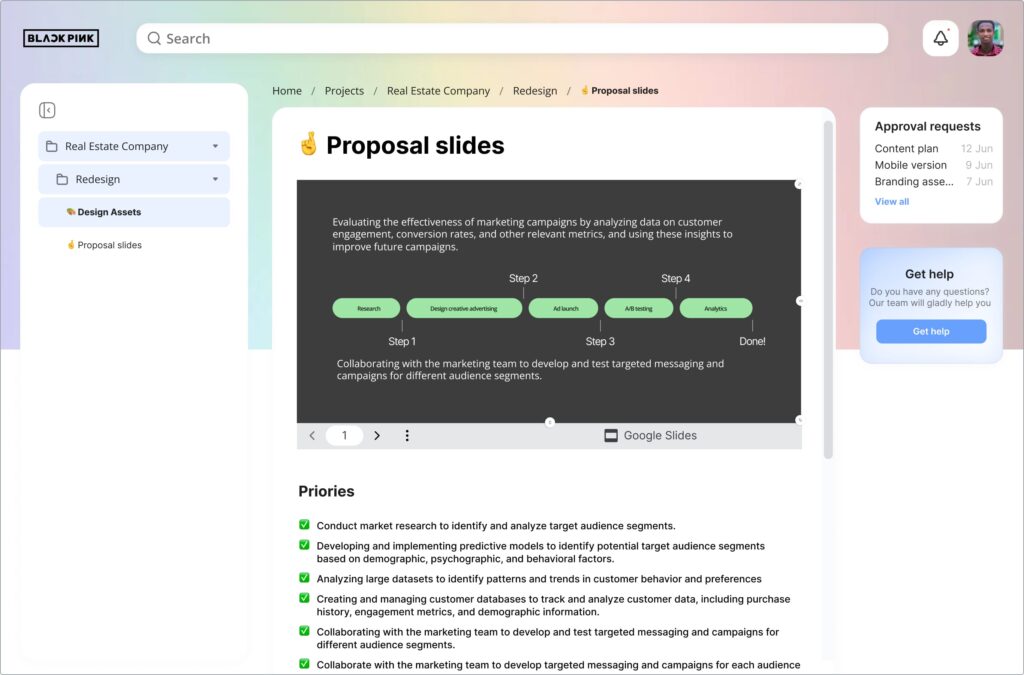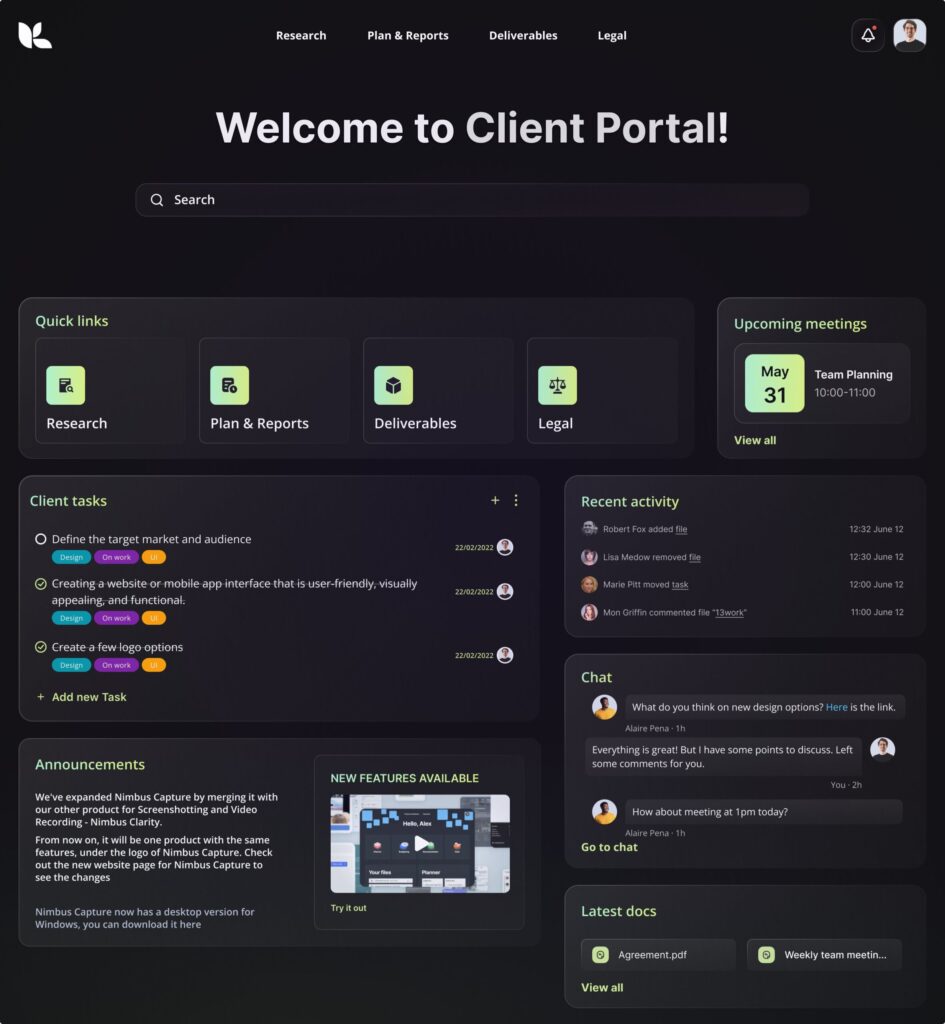
Onboarding vs. Implementation: Do You Need Both?
- 9 Min read
The need for self-service strategy, in order to increase customer happiness and decrease operational expenses for businesses, cannot be overlooked. If you wish to discover the advantages of a well planned service strategy that enables customers to find solutions promptly, look no further! Here’s how we can develop an effective approach that will provide top tier customer experience.

Self-service has become a key component in the customer experience, offering customers quick solutions to their issues and meeting expectations for fast support. Notably, 70% of clients opt for a self-service portal when looking for help. It is vital to keep in mind that 55% of consumers find difficulty utilizing the customer self-service portal which can result in increased expenses for providing assistance. Because of this fact, it’s important to create an effective strategy regarding these services such as convenience, speediness or personalization all while having automation present too!
The implementation of a complete technique taking into account customer needs via self service platforms should be taken under consideration as well as creating prospects for more efficient customer care costs along with higher rates of satisfaction among its users from time invested using our site/platform.
The use of self-service portals brings about many advantages to customers, such as improved satisfaction levels and increased loyalty. Particularly for simpler interactions like booking car rentals or password resets, these kinds of services are especially effective. Implementing a streamlined customer experience through self-service solutions can even generate 10-15% more in profits while reducing costs by up to 20%.
Still it is important to consider the circumstances when deciding whether this route should be taken so that users don’t get frustrated if they do not prefer the do-it-yourself approach. It’s also important to make sure proper implementation is carried out correctly.
A successful self-service strategy is necessary to meet customer expectations for a convenient, efficient and personalized support experience and self service experience. To attain this goal, it’s essential the technology involved is simple and user friendly so customers understand its purpose is to make their lives easier. High levels of effort can cause 96% of people not to be loyal anymore. Hence there must be consistent service across devices in all strategies.
Focusing on delivering an intuitive UX design as well as personalization capabilities will lead to improved satisfaction among clients and consequently increased loyalty towards your business.
Creating a well-rounded customer self service plan requires getting an understanding of what customers need, selecting appropriate tools to meet those needs and integrating self service into their journey. At the crux is the Customer Engagement Hub with custom designed processes crafted for each individual’s experience, multi channel management beyond organizational limits as well as consolidating all interactions and analytics across journeys.
A successful implementation depends on detailed strategizing along with ongoing tactics that are always focused around meeting the requirements of people using these services. Keywords such as ‘self service’, ‘customer’ or ‘service’ must be taken into account throughout this strategy in order to provide optimum experiences for everyone involved.
A successful self-service strategy must start with an in-depth understanding of customer needs and preferences, which can be achieved by examining common support issues as well as gathering feedback from customers. Analyzing existing customer services will assist organizations in identifying areas for improvement within their approach and creating a user-friendly service system that meets all requirements without any obstacles.
Typical solutions offered through this kind of plan are resetting passwords or looking up orders. Such measures would reduce the workload placed on customer support teams significantly.
When choosing self-service software, one should take into account the customers’ preferences and also decide which channels are most effective given the resources. Common types of these useful applications include customer portals, FAQs & knowledge bases, chatbots, virtual assistants, as well as interactive voice response systems and other forms of artificial intelligence. It is essential to design an easily searchable interface with features like answer previews or predictive text for improved discoverability of information. Automation capabilities plus integrations between CRM/ERP can increase usability while reports from those interactions will grant valuable data for improvements in service quality going forward.

A company should map out the customer journey by including all possible avenues customers can take when engaging with their business. This could include redirecting phone calls from contact centers to self-service options, allowing for a warm transfer between live agents and automated services through multiple channels. As well as providing consistency in terms of how users interact via different devices. By improving the overall experience this way, long term loyalty is created amongst customers who enjoy using these self-service alternatives within their journey.
To make the most out of self-service portals and digital channels, it is paramount to prioritize user experience, personalization and performance measurement. Companies should enhance search capabilities for customers along with content discoverability and ease of navigation so they can quickly access what they need. Utilizing AI powered recommendations based on customer data helps create a personalized service that caters to individual needs precisely. Monitoring progress via analytics and metrics assists companies in continuously developing their service quality as well as optimizing efforts, saving time and lowering costs.
Ensuring optimal user experience and access to self-service portal is a must for customer happiness. Incorporating search functions into the interface should be prioritized, as it allows customers to find what they need quickly and easily with help from features such as predictive text or answer previews.
A customized approach towards inclusive product design can increase accessibility regardless of an individual’s abilities. By taking this type of user-centric strategy, tailored products suited to desired needs are attainable while simultaneously enhancing both usability and inclusivity alike.
Companies can leverage AI-powered recommendations and customer data to create personalized self service experiences that fulfill customers’ expectations and exceed their satisfaction. Research has revealed that 51% of organizations offer real-time suggestions during case creation, yet only 21% personalize the FAQ experience based on individual needs. This not only raises delight among customers, but also cultivates a stronger bond with your brand.
Companies should regularly monitor and analyze the performance of their self-service portal to ensure an efficient experience for customers. By measuring data related to successful case deflections, such as the number and type of issues resolved without intervention, businesses can identify areas needing improvement or find any existing pain points that need addressing. This in turn leads to better optimization and continual development of these services.
Self-service analytics allow companies to gain insights into how effective they are with regard to providing assistance through this channel. Thus allowing them to optimize user convenience while using it. This provides fixing pain points with a minimum use of support tickets.
Providing customer service teams with self-service options not only boosts satisfaction and self service experiencefor customers, but can also trim operational costs. Educating the staff on using these tools proficiently and guiding customers to proper solutions is very important. Unifying client support processes by uniting self-service alternatives and centralizing information accessibly should help minimize workloads on customer aid teams so they have more time dedicated to complex issues as well as forming lasting relationships with patrons.
Training a support team, contact center reps and a help center is an essential part of ensuring they have the automated tools necessary to guide customers towards suitable solutions, excellent support and resolve issues of all forms. The best approach includes exercises designed to improve communication, product knowledge and conflict resolution abilities. Defining what good customer service looks like for employees must involve educating them on active listening skills. Empathy and understanding others’ needs, responding promptly with politeness and professionalism and problem solving techniques that are applicable in their role help ensure higher rates of client satisfaction. Offering ongoing training opportunities can help build out even a strong sense of efficiency when helping customers meet their goals or find useful outcomes which leads to increased overall customer happiness at every level!
To improve customer happiness and simplify support processes, integrating self service support solutions such as chatbots, contact center, online knowledge bases and FAQs is a great idea. This allows customers to access answers without needing direct assistance from customer service reps or a live agent, thus reducing stress on teams.
Centralizing important information provides quicker opportunities for customers so their queries can be resolved quickly, optimizing overall customer interactions performance. By using automated options and consolidated data sources, businesses will undoubtedly increase efficiency within their customer care activities while raising client happiness levels and gaining positive customer feedback.
Self-service solutions can bring numerous advantages to both customer happiness and operational effectiveness. One example of this is in airports, where the implementation of self-service check-in kiosks have drastically minimized waiting times while simultaneously enhancing the user experience as a whole.
One company’s approach for successfully introducing self service involves several steps such as setting definitive objectives, recognizing how customers use services offered by them, choosing efficient channels that could be implemented well into existing infrastructure and determining correct metrics which will ultimately evaluate their success rate. All these ideas clearly indicate great potential when it comes to utilizing various strategies related to self service leading us towards higher levels of clientele comfort and much improved business operations.
In summary, the implementation of self-service support is paramount in an overall pleasant customer experience. Companies should devise a strong plan and optimize their service channels to better serve customers while also raising operational efficiency – this could be accomplished through investing in suitable solutions for employees, as well as proper training and procedures. Self-services have great potential when done right: businesses must now take advantage of it if they want to boost client satisfaction levels by creating an effective strategy that works best for them all around.

FuseBase is a beacon of innovation in modern customer service, offering self-service solutions that amplify customer happiness and operational efficiency. With a focus on convenience, speed, personalization and automation, FuseBase reshapes the customer support landscape.
FuseBase understands the vital role of self-service in today’s customer experience. Studies show that 70% of customers prefer self-service portals for assistance. However, it’s critical to ensure user-friendly technology to prevent user frustration. FuseBase delivers a seamless, user-centric experience, exceeding customer assumption and fostering loyalty.
Self-service portals yield numerous benefits, including heightened customer happiness, enhanced loyalty and cost savings of up to 20%. However, proper implementation is key to preventing user frustration.
FuseBase prioritizes user-friendly technology to meet customers’ expectations for convenience, efficiency and personalization. FuseBase fosters customer loyalty by focusing on an intuitive UX design and personalization.
FuseBase’s self-service strategy begins with understanding customer needs, selecting the right tools and integrating self-service seamlessly into the customer journey. It offers a Customer Engagement Hub, multi-channel management, consolidated interactions and analytics.
FuseBase emphasizes user experience, personalization and performance measurement to maximize self-service portals’ potential. Enhanced search capabilities, content discoverability and AI-powered recommendations create personalized self-service experiences. Regular performance monitoring ensures continuous service quality enhancements.
FuseBase empowers customer service teams by training staff to use automated tools and proficiently guide customers toward suitable solutions. This reduces operational costs and allows teams to focus on complex issues and build lasting customer relationships.
FuseBase offers a self-service strategy that optimizes customer happiness and operational efficiency. Through user-centric design, personalization and ongoing performance measurement, FuseBase empowers businesses to make the most of self-service technology and deliver top-tier customer interactions.
Build a successful service strategy with FuseBase!
A self-service strategy is a way of providing customer service that enables customers to take care of their own needs by using the company’s tools rather than needing assistance from representatives—it’s like an accessible knowledge base with answers to frequent questions. This type of approach gives customers autonomy and independence when finding solutions for themselves. It provides customers with access to all kinds of services in order to find an appropriate solution suitable for their particular situation.
A knowledge base is a great example of customer self-service option, offering customers complete guides and support materials to address frequent product questions. This type of service allows customers to provide themselves with the assistance they require without having to contact an outside customer service provider for help.
For a successful service strategy, customers need to have trust. Companies should provide transparent pricing information and declare potential conflicts of interest in order to create customer confidence. It is essential for them to be open about their mistakes and show they take responsibility for those errors by making appropriate amends. This will contribute significantly towards building strong relationships with their clients and ensuring maximum satisfaction from the services provided. Honesty is crucial when striving towards an optimal customer experience that can generate loyalty among current customers as well as attract new ones.
By 2023, the three most popular kinds of self-service kiosks are card issuance machines, automated cash and check deposit stations, as well as sim dispensers. These devices provide customers with great convenience when utilizing services.
Self-service is integral to a positive customer experience, as it enables customers to easily resolve their queries with minimal effort. It eliminates the need for individuals to contact client service representatives, which can consume much time and be exasperating. Self service option allows clients quick access to answers without having to wait on phone lines or for long back-and-forth emails.
Visit our Facebook Page for more articles and updates!
Found it useful? Share the article with your community
Get weekly tips and insights on how to grow your business